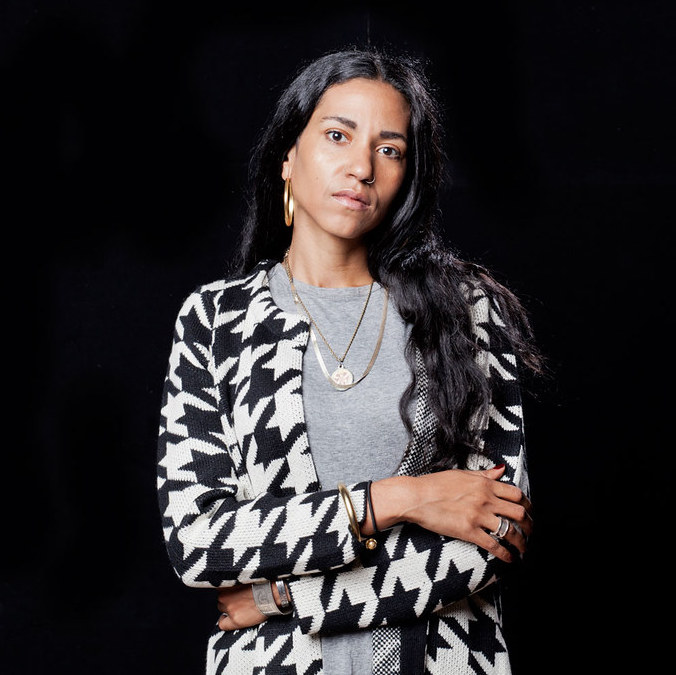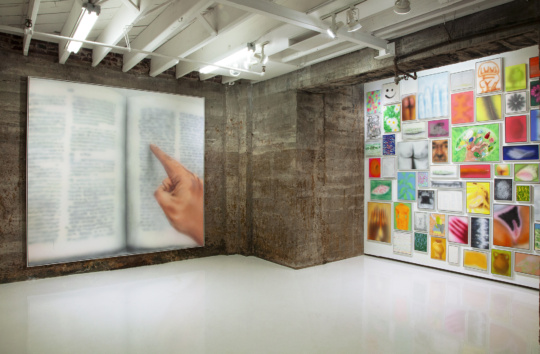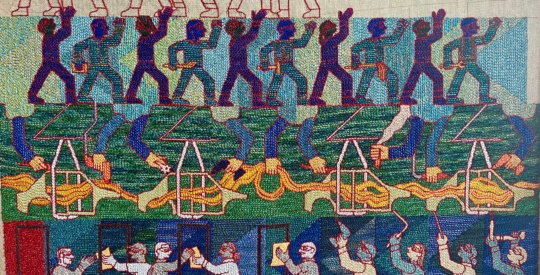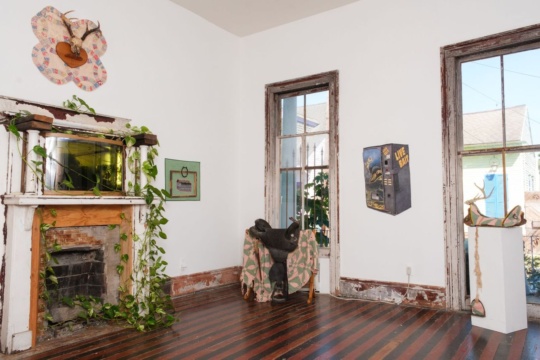
I write in a long tradition of writers like me. I descend from an infinite line of composers, conductors, inventors.
The cosmology of the Bambara—a Mandé people native to Mali who made up a larger portion of the enslaved population in Louisiana than in any other part of the Western Hemisphere—is described in some detail in Gwendolyn Midlo Hall’s Africans in Colonial Louisiana: “According to this cosmology, the universe, emerging from a moving void, undergoes a slow process of acquiring voice and vibration that eventually evolves into light, sound, creatures, actions, and human sentiments.” After the collapse of the Malian empire, the Bambara emigrated into the Senegambia region. Their philosophical disposition was therefore cultivated by movement; it lent itself to cultural retention even amid the horrors of the transatlantic slave trade. In Flash of the Spirit, RobertFarris Thompson examines the Mandekan word woron. Literally meaning “to get the kernel,” it encapsulates the process needed to master speech, song, music, or any aesthetic endeavor. Applying this term to writing art criticism, I try to understand in the simplest terms what I want to communicate about my subject. I start with three sentences that, even if they don’t make it to the final draft, help me build its layers. The goal is to be creative with syntax and still craft readable prose that provokes an emotional response in the reader and gives them something new to consider. It’s an approach to mastery not as the pursuit of perfection but as an intellectual transformation for the editor, writer, and reader. Thompson goes on to outline the Mandé concept of reason, which relies on a balance between badenya (the conformist) and fadenya (the innovator). This tension between tradition and innovation produces a culture always in flux, always moving, changing, and reinventing the world.
Yet—
I write as an impossibility.
Black women born and educated in the Deep South are a recent arrival, and still a rarity in the discipline of art criticism. I was born on the Gulf Coast, in New Orleans. I have chosen, thus far, to try to participate in this industry while living here. According to the United States’ most potent mythologies created during Hurricane Katrina, I am the left behind—a metaphor, a historical occurrence, a phenomenon, or an object; I am a vessel to be studied, eulogized, bemoaned, deified, and vilified by the artist, writer, or critic who will deliver their perspective. It is possible to learn from but not be instructed by a person like me.
How then does someone from such a position of culturally imposed impossibility make their way as a writer? How does this experience not limit but enhance my ability to both create and critique the work of my times? How do Black women, femmes, and gender non-conforming people insert their grammars, perspectives, counter-logics, cultures, and conclusions into public discourse? How did it happen for me? How can I use my own path-in-progress to examine the structure, forecast the future, and move in ways that are beneficial individually and collectively? For me, beyond formal education, this process began from a radical self-declaration: my perspective matters, my thoughts are important, and I don’t need anyone to give me permission to exist in the landscape of arts and letters.This approach is grounded in the Mandekan principles of badenya and fadenya. Alongside pursuing traditional means of publication, one of my most critical professional decisions was to publish and curate independently. This allowed me to build a body of work grounded in my own scholarship and to cultivate a perspective that has served me in institutional settings as well.
I have developed what I call an ethics of the avant-garde in my approach to critique, form, and vocabulary as both a writer and editor. This is not the notion of the avant-garde as defined by Western canonical art history but rather as informed by principles like badenya and fadenya. I can approach my work with a dedication to maintaining certain structures, principles, and ethics as provided by badenya, while embracing the dynamism suggested by fadenya. I think of badenya in criticism as the nuts and bolts: clarity of prose, consistency of grammar and punctuation, and support of theses and ideas that are revisited and clarified in the conclusion of a piece. Badenya also manifests as a consistent and ethical citational practice, while fadenya calls for expanding the archive to properly credit and compensate the work of those often marginalized by the canon.
The following are a few of my working rules and reminders to carry badenya and fadenya into my writing and editing practice:
Make no assumptions or presumptions about the content. I begin by making note of a work’s features and what responses, emotional or intellectual, it evokes for me as I experience it. I then move on from these thoughts to consider the curatorial statement, artist’s statement, other reviews, etc., and how these ideas converge with and diverge from one another.
Resist crafting a hierarchy of perspectives. White supremacy has produced a canon of art history that is exclusionary and incomplete. To counter this version of events, we will require new ways of thinking about sight and an expanded vocabulary to render a more just and equitable archive.
Accept and expect thoughtful edits.
Ask more questions; make less prescriptive word choice edits.
Embrace the unique syntaxes of human speech. Allow English as a language to grow; let it do new things on the page. I embrace the conventions of my speech patterns that emerge out of Southern Louisiana. I tend to favor compound sentences and repetition. I like to bring in words from other languages (such as French, Arabic, Kouri-Vini, Haitian Kreyol, and the Mandé language family) that have influenced the worldviews of my immediate environment. I think translation is important. I also think that the comingling of languages and the artistic principles of non-Western canons can play a role in creating new approaches to writing about contemporary art. These new approaches might be centered on accepting the opacity that this comingling of languages can introduce, while fostering the emergence of new ideas, theories, and ways of seeing. Allowing space for difference can also support, rather than hinder, mutual intelligibility and the development of new and exciting visual languages.
Pay more attention to shape’s ability to guide and enhance meaning. I think of the essay as a poetic form. The shape of the poem, whether formal or free verse, can be as important a decision for the poet to make as specific word choices. So, how an essay is structured is important to my creative process. It is also a part of the principle of fadenya that allows me more freedom in my content without losing the reader.
Consider that you might be wrong.
Thwart expectations. Leaving the reader with something new to consider is essential to my application of woron, of getting to the kernel. We have increasing opportunities to create and disseminate writing that is resistant to the conventions, constraints, and limitations of racial, economic, and state borders and allegiances. I work for the disruption of current formulas and a return to the imagination—the force that Amiri Baraka, in “The Revolutionary Theatre,” called a “practical vector from the soul.”From that mysterious void in each of us can emerge a voice that will inspire action and light.
This essay was originally published in Track changes: a handbook for art criticism, a collection of essays by 25 art writers and editors published by Paper Monument and edited by Mira Dayal and Josephine Heston. Track changes is available for order through n+1.
Kristina Kay Robinson is the New Orleans editor-at-large for Burnaway.




